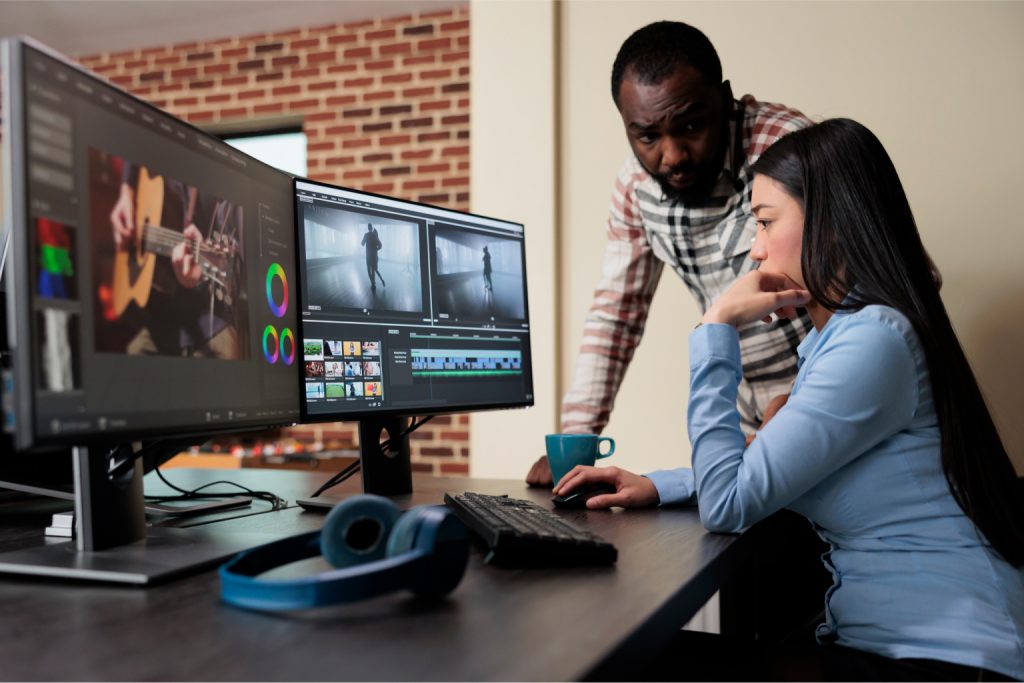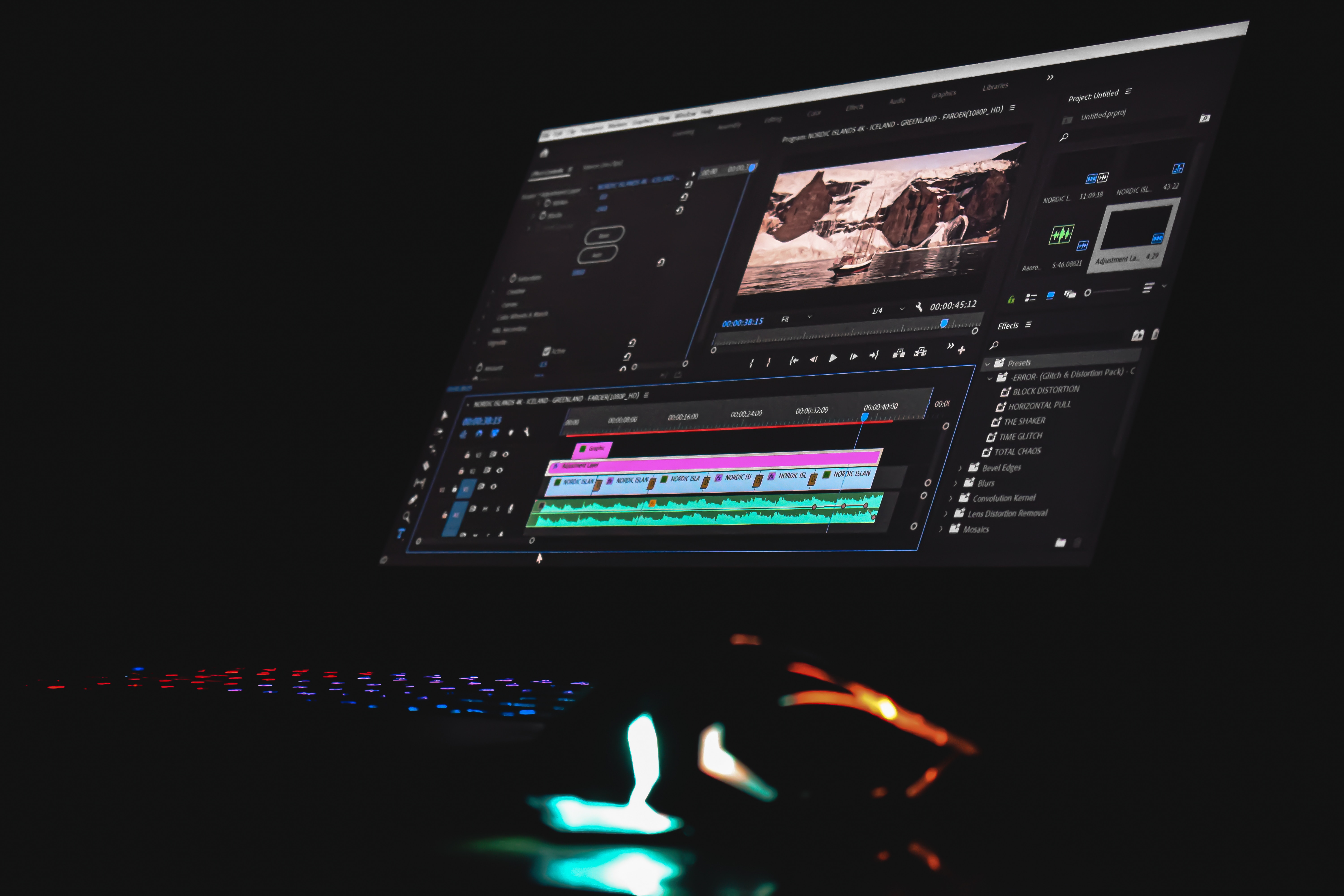In today's digital age, video content has become a powerful tool for communication and storytelling. Whether you're a professional content creator or an aspiring vlogger, high-quality video production is essential to engage and captivate your audience. Following a set of best practices can enhance video quality and take your content creation to the next level. Read on for nine essential techniques to help you produce outstanding videos that stand out in online content.
Adjust Video Resolution and Frame Rate
Video resolution and frame rate play a significant role in video quality. Higher resolutions, such as 4K or even 8K, offer greater detail and clarity but require more storage space and processing power. Consider the platform where your video will be viewed and choose the right resolution to improve video quality.
For online platforms, such as social media or streaming websites, a resolution of 1080p (Full HD) is generally sufficient, as it provides good quality without excessive file size. However, if you are creating content for cinematic purposes or expect your audience to watch on larger screens, 4K resolution can add an extra level of visual fidelity.
Similarly, the frame rate affects the smoothness of motion in your video. Standard frame rates like 24, 30, or 60 frames per second (FPS) are widely used. Higher frame rates result in smoother motion, which is beneficial for action scenes, while lower frame rates can create a more cinematic and artistic look. Choose the frame rate that best complements the style and content of your video.
Choose the Right Format of Outputs
Selecting the appropriate video format for your output is crucial for maintaining video quality and compatibility across various devices and platforms. Popular formats like MP4, MOV, and AVI offer a good balance between video clip quality and file size. Consider using codecs like H.264 or H.265 for efficient compression without the risks of low-quality video. Additionally, ensure your chosen format supports your selected resolution and frame rate.
If you're creating content for a specific platform or device, consider researching the best video format and settings recommended by that platform. Each platform may have its preferred formats and video settings to ensure the best viewing experience for its users.

Implement Proper Lighting Techniques
Lighting is one of the most critical factors affecting the visual quality of your video. Good lighting enhances the clarity of your shots and sets the mood of your video. Investing in proper lighting equipment and learning how to use it effectively can significantly improve the look of your content.
Whenever possible, utilize natural light to create a soft and flattering look. Shooting outdoors during the "golden hour" (the hour after sunrise and the hour before sunset) can provide beautiful, warm lighting. However, when shooting indoors or in low-light conditions, use soft, diffused lights to eliminate harsh shadows and create a more professional look.
Take Steady Shots and Avoid Shaky Footage
Stability is essential for good video quality. A shaky video can be distracting and diminish the overall professionalism of your content. To achieve stable shots, use a tripod or gimbal. Tripods are perfect for stationary shots, while gimbals allow smooth camera movements while walking or running.
If you don't have access to stabilizing equipment, maintain a steady hand while shooting handheld. Keep your elbows close to your body and use your body as a video stabilizer.
Understand the Importance of Camera Composition
Effective camera composition can elevate your video quality and storytelling. The composition is the arrangement of elements within the frame and can greatly influence the visual impact of your shots. Follow the rule of thirds to create visually pleasing shots: Imagine the frame divided into nine equal parts with two horizontal lines and two vertical lines, and position the main elements of your shot along these lines or at their intersections.
Use leading lines, framing, and perspective to guide the viewer's eye and create a more immersive experience. Leading lines can be natural elements like roads or rivers that draw the viewer's attention toward the main subject. Framing involves using objects in the foreground to frame the main subject and draw focus. Experimenting with different angles and perspectives can also add visual interest to your video.
Add Audio and Sound Effects in Post-Production
High-quality audio is just as important as video quality in creating engaging content. Invest in a good external microphone to capture clear and crisp audio during filming. However, even with the best recording, some audio enhancement may be necessary in post-production.
Use audio editing software to remove background noise, adjust levels, and add sound effects or music that complement the mood of your content. High-quality sound effects can significantly improve the viewer's immersion in your content.
Perform Color Correction and Grading
Color correction and grading are post-production techniques that can drastically improve your video's overall look and feel. Color correction involves adjusting the color balance and tones in your footage to ensure an accurate representation of the scene. It helps to correct any color imbalances caused by lighting conditions or camera settings.
After color correction, you can apply color grading to achieve a specific aesthetic or mood. For example, you can give your video a warm, golden tone for a nostalgic look or use cooler tones for a futuristic or mysterious feel.
Optimize Video Compression
Balancing video quality with file size is crucial, especially when sharing videos online. Proper video compression allows you to maintain good quality while reducing the file size for faster loading and smoother streaming. When exporting your video, experiment with different compression settings and codecs to find the optimal balance for your platform and target audience.
H.264 is one of the most widely used codecs for online video sharing because it balances quality and compression efficiency well. However, newer codecs like H.265 (HEVC) provide even better compression, resulting in smaller file sizes without sacrificing quality.
Use an Online Video Enhancer or Video Enhancer App
If you're looking for a quick and easy way to enhance video quality, consider using an online video enhancer or video enhancer tools. These tools often offer advanced features like upscaling, denoising, and sharpening, which can improve the appearance of your footage without extensive editing skills.
Video enhancer apps are available for various platforms, such as desktop computers, smartphones, and tablets. These online video editors are designed to be user-friendly, allowing you to enhance your videos with just a few clicks. A video resolution enhancer can be particularly useful for content creators on the go or those with limited access to professional video editing tools.
Elevate Your Video Production With Royalty-Free Music
You now know how to make a video better quality. With suitable royalty-free music, your content can now captivate audiences.
Royalty-free music enhances video quality by adding emotional depth, improving viewer engagement, and contributing to brand identity. It provides many high-quality tracks that complement visuals, evoke emotions, and captivate audiences. With legal usage and copyright safety, royalty-free music elevates the overall production value of videos.
Take your videos to the next level with the power of royalty-free music. Elevate your storytelling and immerse your viewers in an unforgettable audio-visual experience. Visit StockMusic.net to explore a wide range of high-quality tracks for your video production needs.




